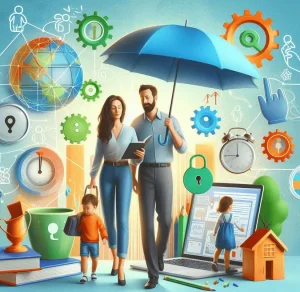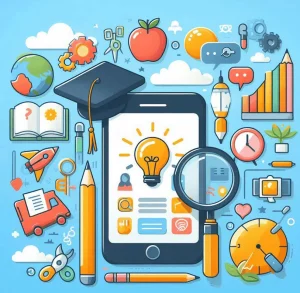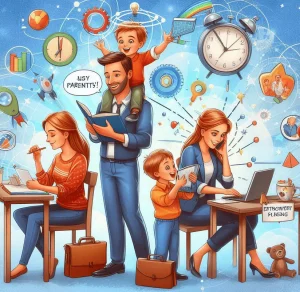Most people recall their high school and undergraduate education in fragments. Atoms possess a property called valency. Great Britain has no constitution, but is a constitutional monarchy. Many students have trouble using such discrete, disembodied facts. Yet most people define “education” as the delivery and storage of such “facts” and think of lectures as the most efficient form of delivery. However, how many of us can accurately and concisely explain how blood courses through the body? How changes in interest rates affect stock market indicators or currency exchange rates? And how does a bill move through Congress?
This paper introduces a version of active learning called problem-based learning (PBL).
Several factors are reshaping the educational environment and compelling teachers to reconsider how and what to teach. Business is restructuring. Government is trying to restructure. Our economy and culture are in flux. Why should schools and their curricula and their teaching techniques remain unchanged during this revolution in every other aspect of our lives?
Government officials, taxpayers, parents, and business leaders are demanding curricular and administrative reform to relieve pressures arising from budget woes, competing public desires, a rapidly changing workplace and marketplace, and declining student achievement on social science subjects ranging from geography and history to civics and world affairs. Many communities and educators want teachers to address violence, poverty, inequalities, and intolerance in schools and society. Community leaders and business leaders want schools to foster skills that students can take to their future careers. Indeed, business communities in several states are founding and funding alliances between state governments, business, and industry. Business executives and government officials want schools to improve students’ skills in order to reduce welfare burdens and to improve individuals’ ability to contribute productively to the national economy and corporate competitiveness.
What are the advantages of PBL?
Six sets of criteria offer reasons for considering PBL as an augment to one’s standard teaching repertoire.
1. From teachers: Many students retain information and concepts better using PBL than using other teaching methods because PBL employs an integrated set of teaching techniques. These techniques embody the basic premise: many students will better learn information if they need to use it, and they will better see the need to use it as they try to solve specific problems. The approach encourages students to learn in a hands-on style in the context of a problem, to use immediately the knowledge they discover, to apply the information, and to teach or explain to others. With these techniques, especially in combination, students retain dramatically more information.
2. From students, educational psychology: PBL is a form of “active learning”, which educational research demonstrates is the most effective technique for students to learn, apply, integrate, and retain information. Many students also prefer to learn in this active style.
Over 68% of the students are most excited by the external phenomena of people, events, and experiences rather than the internal world of ideas and concepts. Externally-oriented students learn most comfortably by devoting their energy and attention outwardly toward experiences, interactions, and talking. These students learn best by acting and discussing, then generalizing from the specific situation to broader conceptual or theoretical themes. While many courses contain some “active” activities, most courses do not emphasize them, thus skewing the learning experience away from active learners. Conversely, internally-oriented students learn best by directing their energy inwardly toward thinking, feeling, reflecting, and writing. These reflective students, comprising about 29% of the general and student population, learn best by doing what we typically call “studying” – that is, by mentally pondering and rehearsing specific material. These are the activities and skills emphasized in most courses.
3. From cognitive development: PBL moves students from the brute collection and comprehension of facts to application, analysis, and evaluation. These are the highest levels of cognitive development, a standard classification in educational development.
4. From intellectual development: PBL moves students from crudely dualistic and idiosyncratically subjective notions of knowledge into an appreciation of knowledge and decision-making as contextually-relative. These are the highest levels of intellectual and ethical development, another standard model in educational achievement.
5. From educational psychology, theories of learning: The cycle of learning moves students through several stages of learning. Further, PBL’s student-centered format moves students from passive recipients of knowledge to active learners and participants.
6. Business, government, parents, society: PBL meets the express goals of business, government, and parents by developing in students basic competencies and skills that will improve their competitiveness in the workplace. Students also develop personal qualities of discipline, tolerance, and creativity, as well as the socially desirable qualities of working with others, compromise, teamwork, leadership, organization, and cooperation.
PBL does not require complete or fundamental change in one’s teaching strategy. PBL can become an effective augment to current techniques and preferences. Indeed, activities may spark excitement and interest in your active learners without confounding reflective learners. By combining PBL with traditional writing and testing assignments, all students acquire a “fuller” learning experience. Thus, each student participates in a set of activities that, as a whole, challenge and build upon her/his skills and preferences.
What is PBL?
PBL is a teaching approach that requires students to take responsibility for their learning by placing them in groups to confront problems given to them by the teacher, who facilitates their explorations and efforts. As students engage the problem they identify basic principles and concepts, develop a core stock of knowledge, integrate and organize their knowledge, develop critical thinking and other skills, and learn to learn.
1. Problems Organize the Learning Environment
Students are presented with a problem or scenario: e.g., legal dispute, policy proposal, ethical dilemma, puzzling conditions. Such problems may appear in a written case, a video clip, a journal article, an editorial, a vignette, or any other workable vehicle. Students will not possess enough prior information to immediately solve well-devised problems based on concrete, open-ended situations. Indeed, information necessary to devise a solution is not provided in the problem; students must identify, locate, and use appropriate resources.
2. Much Learning Occurs in Groups
Organized into groups of 5-9 students, the students embark on a cycle of learning. Analysis, research, and reporting are three important stages, with discussion and feedback from peers and teacher at each stage. Students’ initial analysis involves assuring that everyone in the group understands the basic concepts, characterizing the nature and scope of the problem, and arranging information into three categories:
– what is known?
– what is needed?
– what should be done?
After listing what is known – whether from the problem, previous knowledge, or personal experience – the group members should devise a specific statement of the problem. This statement may be based on discrepancies in data, incongruous events, anomalous conditions, or the needs of clients, constituents, or policymakers. The category “should be done?” helps students assign responsibilities for research (the next stage of the cycle). In this stage students shape the problem in their terms by dividing the tasks and delegating to group members the responsibility for researching needed information. This stage also elicits and activates students’ existing knowledge, a crucial step in learning new information.
In the subsequent research stage, students collect necessary information on specific learning issues raised by the group. Students may conduct library searches, seek sources on the Internet, collect data, and/or interview knowledgeable authorities. Students teach themselves, thereby becoming responsible for their learning, as they research their learning issues. Further, they come to see the complexity and texture of the problem and, perhaps most important, may realize that information is not an end in itself. Rather, information is a means to the ends of managing problems competently.
Last, students report their findings to the group. At this moment individual students become “experts” and teach each other. Depending upon the scope and purposes of the problem, subsequent discussion may generate a possible solution or new learning issues may arise for the group to explore. Final solutions are reported to other students, to the class as a whole, and/or to the teacher. At this stage, the teacher’s feedback addresses whether the original learning issues were resolved and whether the students’ understanding of the basic principles, information, and relationships is sufficiently deep and accurate.
As groups form conclusions, it is important for the teacher to make clear that the purpose of the problem is primarily to contextualize learning and knowledge. Attention must be paid to both the specific case and to the general issues raised. The use of cooperative groups helps foster learning communities of students. Research studies clearly show that student achievement improves when students work in cooperative groups. Also, this format improves the achievement and affective impressions of women, minorities, and others who are frustrated or repelled by the competitiveness and academic isolation fostered by typical university courses. Further, group work helps students develop verbal and writing skills, teamwork, compromise, and critical skills.
3. Teachers Act as Guides or Facilitators
Teachers must yield some of their “traditional authority”. Instead, teachers become facilitators who guide students’ learning, probe their reasoning, and encourage them to become active and responsible learners. The occasions for “teaching” remain plentiful. The means change as teachers organize the learning objectives, problems, and questions, and pilot the learning cycle, then teach skills within that format. The teachers move among active groups, directing their discussions and energies when apt. Rather than lecture information or manage behavior, teachers cultivate skills, focus effort, foster resourcefulness, and maintain an interactive climate of learning. Teachers can integrate pedagogical devices as diverse as case studies (the problem), group work (student teams), problem-solving (vocational learning-by-doing), Socratic method (teacher interaction with groups), and class discussion.
For inexperienced learners, or for teachers who prefer to retain clear authority and control, interspersing mini-lectures or teacher-led discussion into the group-oriented work can be effective. In such cases, the problems given to students should contain natural breaks at which the teacher can shift attention from the group to the instructor. At such breaks, the teacher may deliver critical information, lead a class discussion to clarify concepts or misconceptions, introduce the next stage of the problem, shift students’ attention to a different skill, or compare groups’ progress.
For groups analyzing a problem (initial stage of learning), facilitators should ask students questions to help them determine what is known, unknown, and needs knowing. As group members return to analysis and discussion following research, teachers must avoid the impulse to tell students whether they are right or wrong or to provide any solution. Teachers must always decide how far to let groups wander, how long to let them explore blind alleys, before (or without) redirecting them. Teachers can help group members’ develop skills that advance problem-solving by asking well-formed questions that model the types of questions that students should be asking, or that researchers or professionals in the field actually ask. Indeed, teachers can guide students to ask of themselves the kinds of questions that help to characterize the problem, identify required knowledge, and evaluate what they discover. Such questions should help students clarify basic information, focus their investigations, and refine their problem-solving strategies.
During final reporting (an end stage of the learning cycle), the teacher helps guide the students from the concrete case to the general themes, basic principles, and key concepts that infuse the problem. By the problems the teachers create and the questions they ask, they are always directing, but only indirectly. Of course, teachers may become fully directive as needs and preferences warrant.
4. Learning is Student-Centered
When teachers act as facilitators, PBL requires students to take responsibility for their learning. Students wrestle to identify the character of the problem, information they require, resources necessary to gather such information, possible solutions, and a final solution. Students then present their solution in some fashion to other students and/or teacher. As students determine what will be learned and how, they become active participants in class and in their own learning. The problems encourage students to question, explore, explain, evaluate, and collaborate. In this format, students tailor their learning by pursuing individually the learning issues that interest them and by focusing (in the groups) on the areas they understand least. Indeed, one strategy is for an individual student to research the group learning issues that she or he understands least. The resulting learning is active, integrated, cumulative, and connected.
By decentralizing the classroom, students discover the latitude to explore ideas and express themselves. They also find they must engage others and confront ideas novel to them. Not every student will appreciate or take advantage of the opportunities, but they will fare no less well than in a conventionally organized course. Those who become engaged will shine because they can radiate their creativity. Rather than perform stock assignments, students can decide how to proceed and express themselves. These are essential skills in life, so why not emphasize them in the classroom?
Some students, however, may be frustrated, particularly those who are firmly dualistic thinkers who define “knowledge” as the collection of concrete right-or-wrong “facts”.
Other studies indicate that students who learn information in an active learning environment retain the information longer and more clearly and can recall the information more quickly and effectively because they have learned the material in context. More specifically, the students were able to locate their new information in a “semantic network” that structures the knowledge and associates it with related concepts and experiences. In this sense of semantic and cognitively structured knowledge, the foremost role of instruction is not to convey information but to help and encourage students to develop the skills necessary to direct their own learning so that they can “construct” knowledge in ways that are effective for them.
What issues should be considered when introducing PBL?
The technique is compatible with multimedia presentations, group work, case studies, debates, lectures, and other formats. If you decide to dive in, bear in mind that class size, class length, physical setting, and subject are factors. You will prefer to start with fewer than two dozen students with a class time of at least 50 minutes. A classroom with moveable chairs is helpful, but not essential.
Your initial preparation time will be longer than if you are preparing lectures. But the initial investment is less strenuous than devising a wholly new course and it amply rewards your efforts. Student anxieties and criticisms can be effectively addressed by reminding them of the value of particular activities and formats, assuring them about the structure of the course and problems, offering the clearest possible expectations and directions, offering frequent encouragement, and providing routine feedback. Grading and assessment will also concern your students, so you will have to introduce them to peer evaluations, share occasional written feedback to individuals and groups, and devise appropriate assignments. Students generally react enthusiastically to interactive assignments such as debates, discussions, and Q&A; sessions during which students field each other’s questions.
Creating suitable problems is an obvious concern. Almost anything can be effective if it is controversial (not raucous), puzzling, non-trivial, and uncertain because there is no clearly “right” or “correct” solution. Such choices are especially effective if the groups will work on the problem for only minutes to days. If you plan longer and more complex problems to challenge students for several class sessions or several weeks, then the character of your questions, the mechanics of forming groups, attending to group dynamics, helping students establish group rules, and moderating group tensions become more prominent concerns.
If your central concern is to deliver content through the group problem-solving, then you will likely want to devise substantive or involved problems (to occupy students over several to many class sessions) and to form permanent groups. However, if you intend the group effort to convey substantive knowledge and to help students learn cognitive and social skills – such as how to analyze and evaluate date, how to critique information, how to start and manage a group, how to work in teams, and how to resolve conflicts – then you will likely want to rotate group memberships more frequently (at least once at midterm) and to devise more focused problems to engage students for one to three class sessions. In this case, you will likely deliver and connect much basic information in other formats, such as focused mini-lectures, wrap-up discussions, and such.
Teachers may organize the groups randomly or may purposefully mix students by major, grade point average, year in school, interests, or other factors. In some courses, group membership changes often. If groups are permanent, then the members form their own ground rules (agreements or policies devised by the members for how the group will function), paying specific attention to attendance, assignment of tasks and responsibilities, punctual completion of tasks, resolution of conflicts, and consequences for those who violate rules. In large or permanent groups, equal participation may be assured by assigning and rotating roles such as organizer, recorder, reporter, questioner (a person who asks questions to assure accuracy and understanding or to play the “devil’s advocate”), and so on.
An effective way to introduce yourself and your students to the process is to start small. Try giving your students a problem to work on for 15-20 minutes (if you have a large lecture course, give them a 5 minute problem). Use a simple catalyst – like a magazine photo, an editorial, a political cartoon, or a hypothetical scenario – to pose brief questions: What would you do and why? What principles are at work? What are the likely causes or consequences? How might Famous Person X react? There are no limits. Use their reactions to generate a class discussion, derive a classification scheme, unearth underlying principles, illustrate theoretical traditions, embody a deeper problem worthy of attention, exemplify complexity or variety into your lecture. You and your students will find the results invigorating.






More Stories
One Quote From Each Professor That Perfectly Sums Up Their Personality
New ED-Commissioned Study on ESEA Provisions that Protect Students
Lisa Nielsen: The Innovative Educator: 5 Pandemic Learning Gains